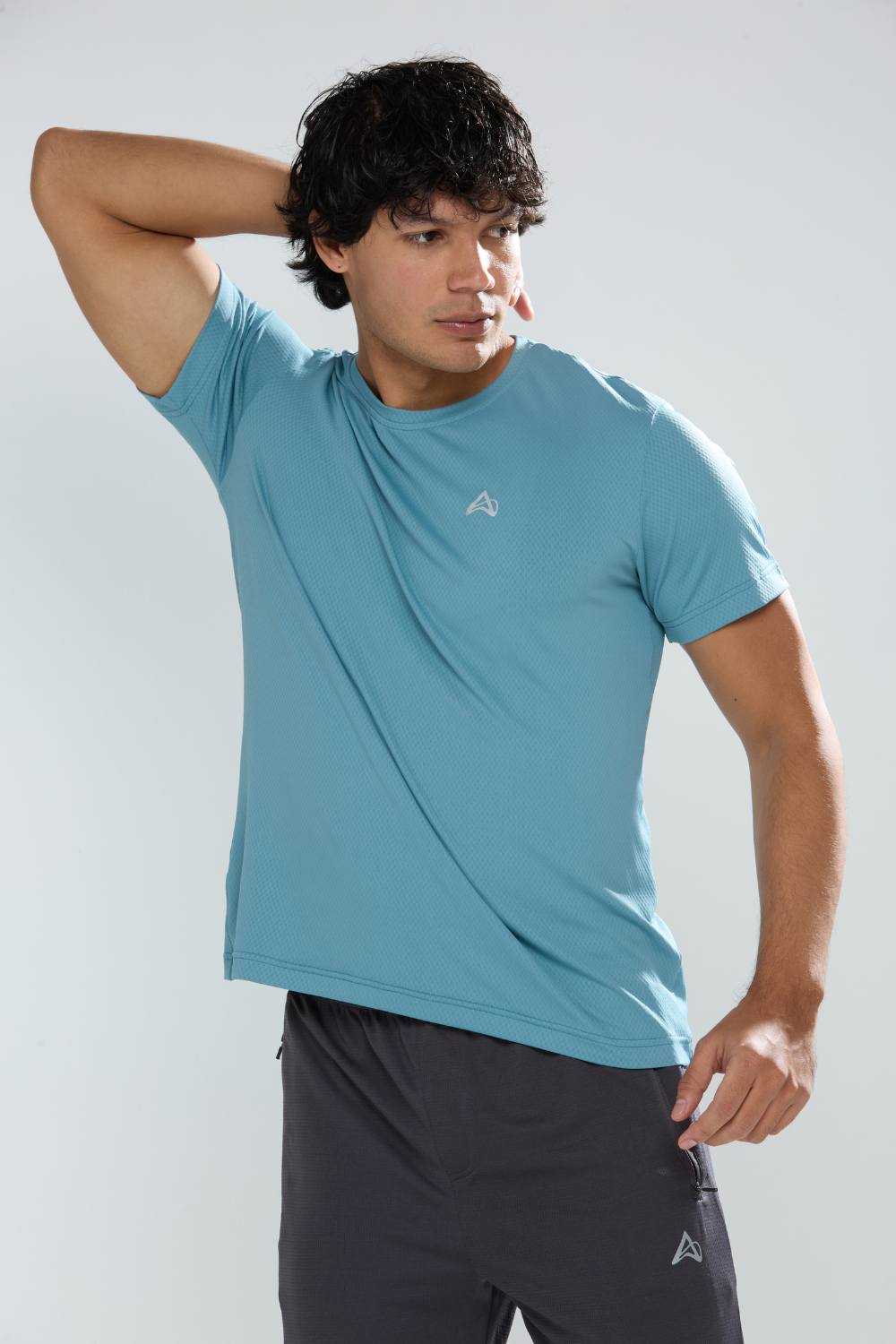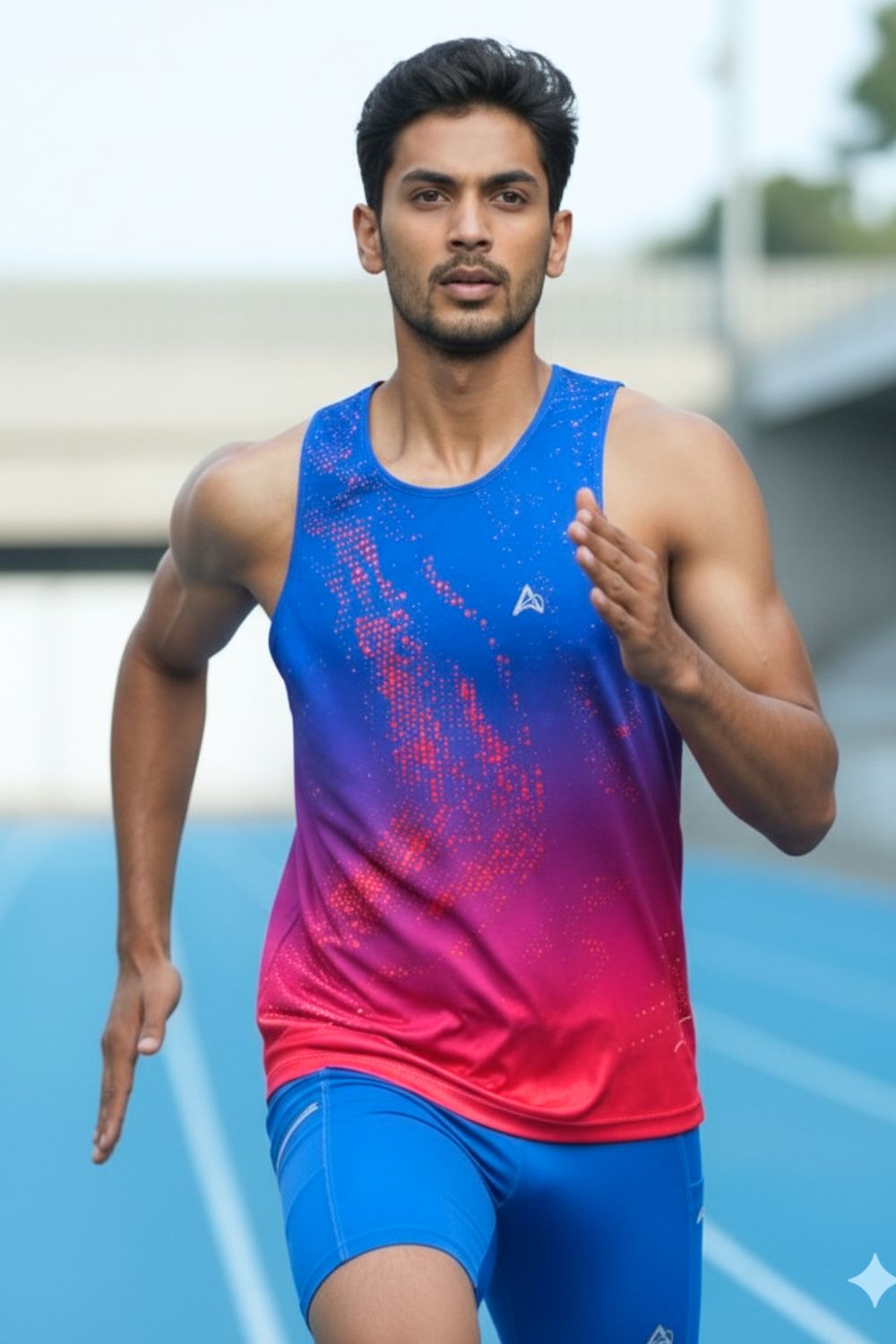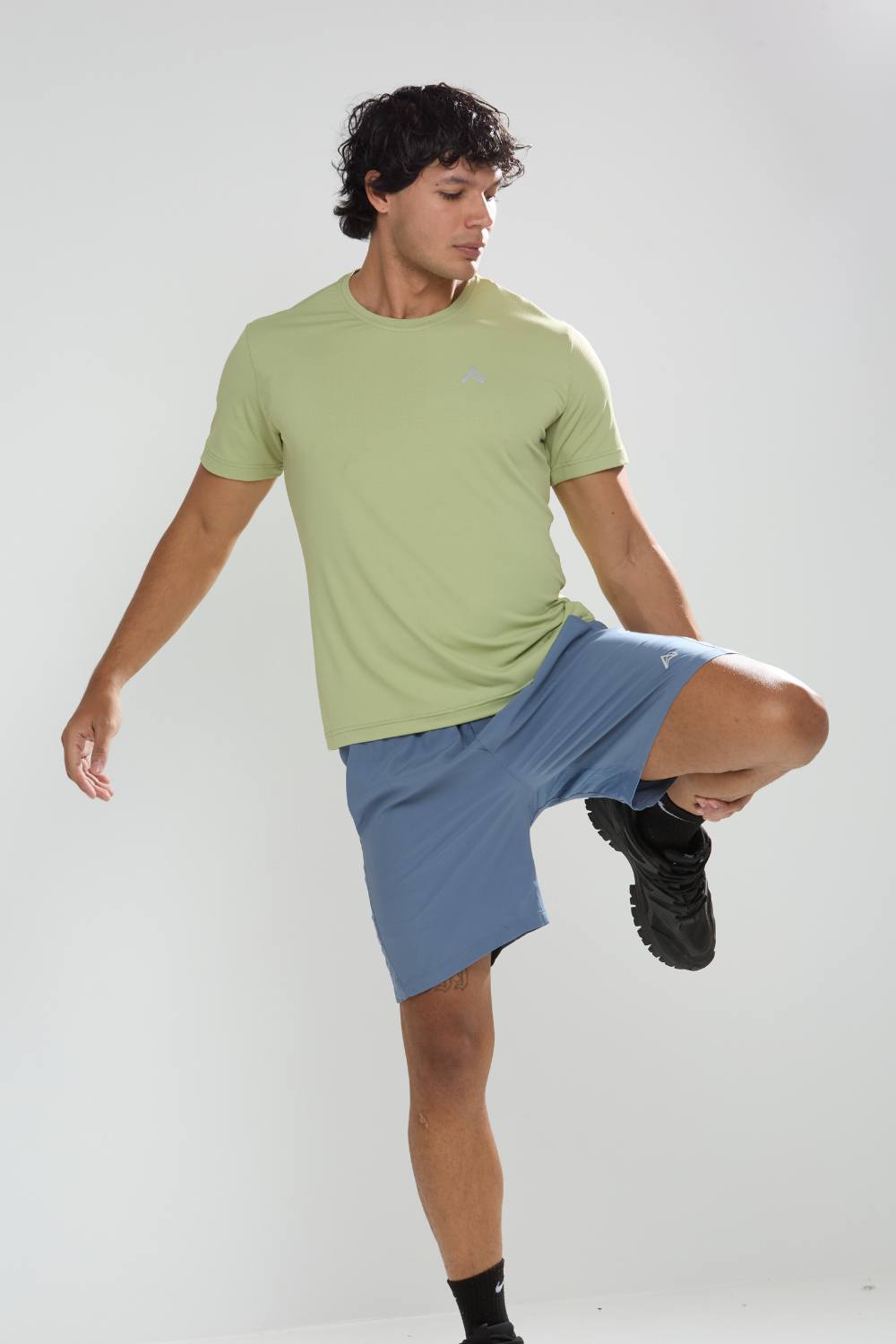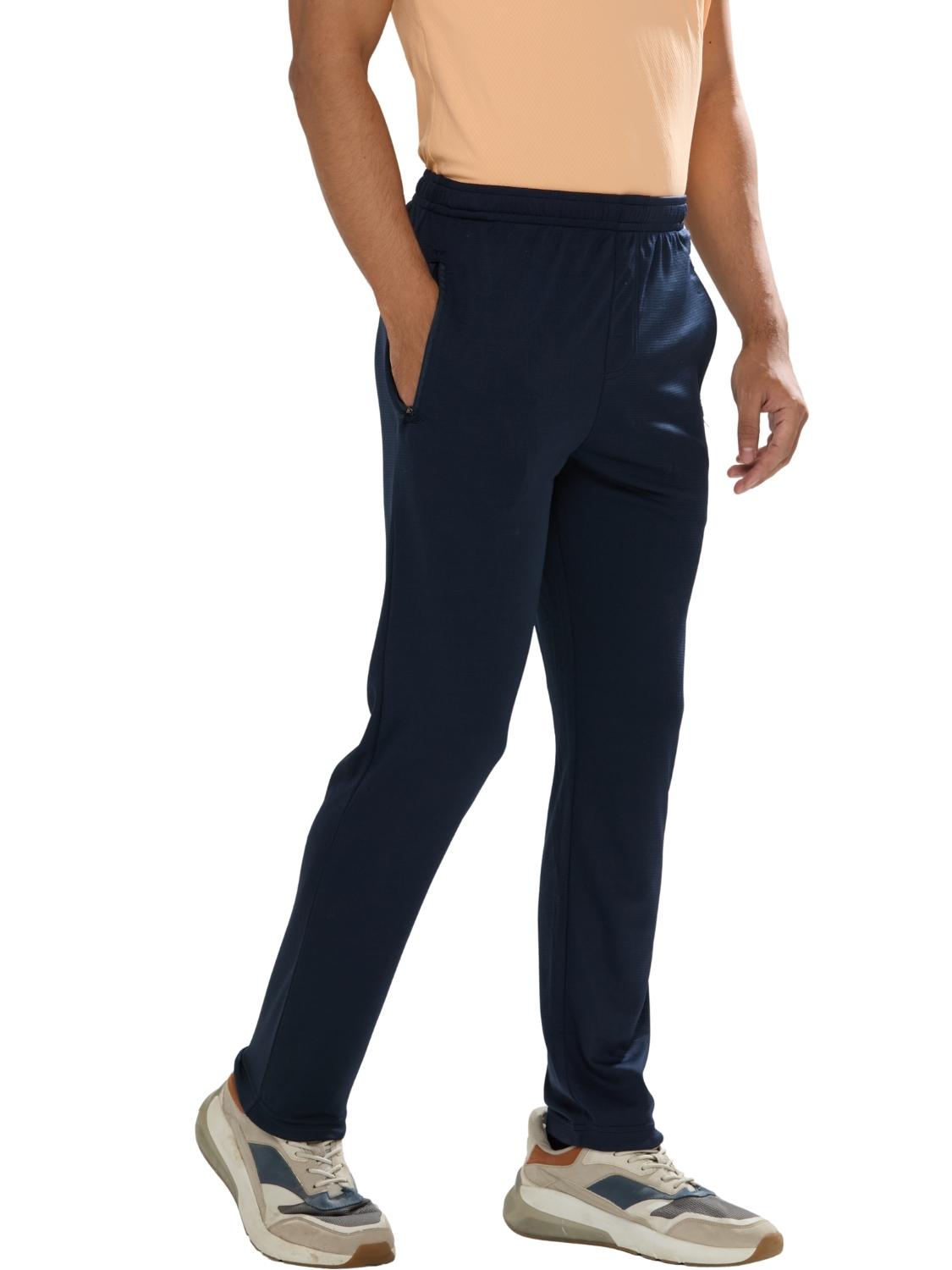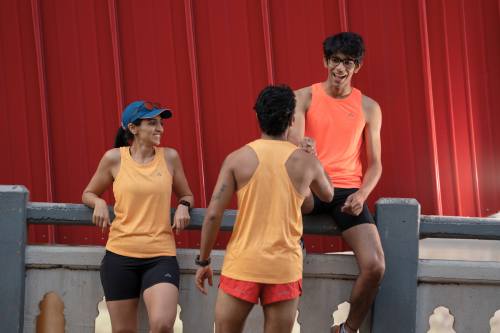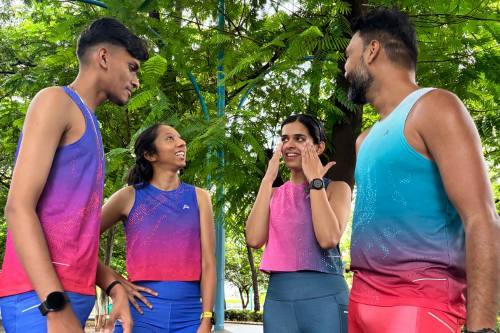Quick Listen:
Imagine the predawn haze of Bangalore at 5 a.m., where humidity clings like an unwelcome shadow and a throng of runners weaves through awakening streets toward the leafy sanctuary of Cubbon Park. Beads of sweat emerge almost immediately, threatening to transform a grueling 21-kilometer half-marathon into an ordeal of chafing and discomfort. Across India, from the tech-savvy pacesetters of Hyderabad to the resilient coastal challengers of Mumbai, marathon enthusiasts confront more than just distance they grapple with perspiration's unyielding sabotage of focus and form. Yet, amid this daily duel, advances in fabric technology emerge as a pivotal ally, converting potential defeat into unyielding drive. This exploration delves into how such innovations, exemplified by forward-thinking brands like Aguante, are redefining endurance for runners navigating India's diverse and demanding landscapes.
Tired of gear that slows you down? Chafing, soggy fabrics, and missing pockets kill your run's momentum. At Aguante, we're runners who get it. Our high-performance activewear features moisture-wicking fabrics, ergonomic designs, and smart storage to keep you focused. Shop Now!
Emerging Trends in Fabric Technology for Marathon Runners
The journey of running apparel has evolved dramatically since the era of rigid cotton shirts that turned into heavy, moisture-laden burdens during extended efforts. Contemporary fabrics represent a sophisticated interplay of science and athletics, where textiles actively engage with the body's thermal demands rather than merely shielding it. Central to this transformation are moisture-wicking materials, the steadfast guardians of prolonged exertion. Far from rudimentary synthetics, these are precision-engineered constructs that siphon perspiration from the skin with remarkable swiftness, ensuring runners maintain composure amid escalating intensity.
This surge in fabric ingenuity aligns with a broader escalation in global athletic engagement, propelling the global sports textiles market to a valuation of USD 213.81 billion in 2023, with projections reaching USD 367.22 billion by 2032 at a compound annual growth rate of 6.55 percent from 2024 to 2032. What fuels this expansion? A heightened appetite for apparel that prioritizes breathability, moisture management, and resilience essentials that empower athletes to prioritize performance over physiological distractions. As participation in sports and fitness burgeons worldwide, these textiles, infused with cutting-edge fabric technologies, stand out for their ability to sustain comfort across demanding activities like marathon training.
Among the most transformative are adaptive smart fabrics that respond dynamically to environmental cues and bodily signals. A landmark achievement came from University of Maryland researchers, spearheaded by Physics Professor Min Ouyang and Biochemistry Professor YuHuang Wang, who in 2019 introduced the inaugural material capable of seamlessly switching between cooling and insulating modes. This fabric employs a dual-fiber yarn one hydrophilic to absorb water, the other hydrophobic to repel it both coated with carbon nanotubes. In humid, heat-generating scenarios like a runner's escalating sweat during a Delhi morning jog, the moisture prompts the fibers to twist and align, widening microscopic pores. This configuration facilitates the emission of infrared radiation, dissipating body heat efficiently without added weight or complexity. Conversely, in drier, cooler settings such as a brisk Gurugram twilight run, the structure tightens, blocking infrared escape to conserve warmth. This near-instantaneous adjustment detailed in a Science journal publication ushers in an era where apparel anticipates overheating, offering marathoners unprecedented thermal equilibrium.
Sustainability further enriches this landscape, ensuring that performance gains do not compromise ecological integrity. Blends of recycled polyester and bio-based fibers are gaining traction, delivering lightweight, rapid-drying options resilient enough for the uneven, debris-littered paths of Surat or Ahmedabad. Recent industry moves underscore this ethos: In March 2024, Adidas launched TwistKnit and TwistWeave technologies within its Ultimate365 line, eschewing elastane for enhanced stretch, reduced weight, and improved mobility innovations now accessible via Adidas channels and select outlets. Similarly, Nextile's June 2022 seed funding of USD 5 million, backed by investors including Drive by DraftKings and Olympic medalist Hilary Knight, accelerates developments in performance analytics-embedded fabrics. Yet, a standout progression lies in holistic sweat mitigation systems. The i-Cool textile concept, pioneered by Stanford's Yi Cui alongside 28 collaborators and submitted in September 2020, exemplifies this by fusing heat-conductive pathways with water-transport channels. This design excels in liquid wicking and evaporation surpassing conventional options, yielding a 2.8-degree Celsius cooling advantage over cotton while curtailing dehydration to under one-third the typical volume, as validated on a simulated perspiring skin apparatus. For endurance athletes enduring Pune's oppressive heat or Navi Mumbai's briny winds, such integrated solutions transcend mere fabric they redefine physiological resilience.
Real-World Examples: How Aguante is Innovating for Indian Runners
Aguante distinguishes itself by eschewing distant, generic prototypes in favor of apparel forged in the crucible of India's vibrant running culture. From Mumbai's rain-slicked promenades to Hyderabad's arid circuits and Delhi's infrastructural gauntlets, the brand tailors each element to the idiosyncrasies of local exertion: erratic weather, varied terrains, and the nuanced ergonomics of diverse physiques. Their collections zero in on the subtle aggravations that erode resolve pockets that shift disruptively, seams that inflame post-midpoint, materials that stifle rather than soothe.
Foremost is breathability calibrated for subtropical rigors. Echoing the i-Cool framework, Aguante's proprietary weaves direct sweat via specialized channels, promoting evaporation before accumulation disrupts rhythm. Field trials in Bangalore's perennial 30-degree-plus fug reveal participants remaining notably drier than in rival gear, a testament to fabrics attuned to Indian somatotypes shaped by culinary heat and occasional highland retreats. Whereas a generic overseas tee might squander liters to unchecked evaporation, precipitating electrolyte imbalances, Aguante's fitted barriers minimize such losses, embracing the form without constriction and sustaining hydration integrity.
Addressing chafing demands equal rigor. Seasoned marathoners dread the insidious friction: inner thighs igniting in silent protest, armpits protesting by the race's pivot. Aguante deploys seamless, friction-resistant interiors, refined through circuits spanning Gurugram's verdant corridors to Surat's utilitarian expanses. Subtle reflective accents ensure visibility in low-light launches, complemented by stabilized pockets that secure nutrition packs and devices sans oscillation. As one Mumbai half-marathon stalwart attests, the ensemble "dissolves into irrelevance," a sentiment mirrored in the digital trails of influencers like coaches Shanth Koushik and Amit Kumar, whose feeds overflow with acclaim for unimpeded progression. These validations stem not from abstraction but from the forge of metropolitan competitions, where marginal efficiencies dictate outcomes.
Digital ecosystems amplify these narratives. On Instagram, Facebook, and YouTube, testimonials from Pune's pavement pounders to Ahmedabad's asphalt assailants proliferate, chronicling apparel that harmonizes with India's caprices flash floods in Hyderabad, hazy dashes in Delhi. This synergy dismantles the divide between extraterritorial allure and indigenous efficacy, supplanting the ritual of shedding encrusted layers with seamless recovery that perpetuates vitality.
Key Challenges in Fabric Technology for Marathon Runners
Crafting textiles for India's runners presents a multifaceted conundrum, demanding versatility amid climatic volatility. The nation's topography yields extremes: Hyderabad's arid blaze yielding to Mumbai's vaporous veil within days. Materials must navigate coastal mugginess that agglutinates fabrics and northerly dips necessitating insulation sans encumbrance a precarious equilibrium where excess permeability invites chills during Surat's cooler decathlons, while over-insulation amplifies Ahmedabad's midsummer inferno.
Comfort's alliance with longevity forms another arena of contention. Avant-garde weaves vow evaporative prowess, yet endure they repeated cycles of cleansing and traversal? Bharat's rutted thoroughfares abrade inferior compositions, and rigorous domestic washing in mineral-rich waters erodes vitality. Mastery requires perpetual refinement: Aguante's cadre iterates on-site, calibrating silhouettes for spectra from svelte elites to novice accumulators. The Maryland innovation's nanotube infusion proffers scalability and tint compatibility, yet mass deployment for Pune's sanctioned spectacles hinges on indigenous acumen to preserve affordability without diluting caliber.
Opportunities and Business Impact
India's marathon renaissance evident in the thronged starts of Bangalore's nocturnal dashes or Delhi's premier convocations unlocks vast potential for autochthonous pioneers. As enlistments soar, the imperative for accoutrements mirroring native contours, budgets, and byways intensifies. Aguante capitalizes herein, proffering summit-level engineering at temperate tariffs: absent transoceanic surcharges, streamlined fabrication births ensembles below 2,000 rupees that eclipse costlier exotics in tenacity.
The repercussions extend profoundly. Athletes attain velocities once fanciful, assurance amplified as abrasions recede and perspiration aligns strategically. Fiscally, it cascades: indigenous employment in ideation and assembly, a sector primed for the 6.55 percent worldwide textiles ascent. For entities akin to Aguante, commerce begets camaraderie, nurturing Instagram vignettes of victorious culminations and YouTube dissections of apparatus stratagems that magnetize neophytes.
A Future Woven in Sweat and Innovation
With marathons proliferating from Hyderabad's auroral pageants to Navi Mumbai's littoral labors the textile vanguard accelerates. Mentors animating Instagram via unshod regimens or biomechanical tweaks affirm: Equipment evolves into catalyst. Within the i-Cool's evaporative supremacy and Maryland's responsive bulwark lie paradigms for anticipatory raiment. For Bharat's striders, Aguante incarnates this fusion vernacular brilliance converging with endurance, transmuting sweat's affliction into masterful poise.
Poised to embark unhindered? Immerse in Aguante's endurance-optimized array, wherein each filament resonates with your domain. The ensuing zenith beckons, liberated and indomitable.
Frequently Asked Questions
What fabric technologies help marathon runners manage sweat and stay comfortable?
Modern fabric technologies use moisture-wicking materials that actively transport sweat away from the skin, preventing chafing and discomfort during long runs. Advanced smart fabrics can even adapt to environmental conditions - cooling the body when it's hot and humid by opening microscopic pores, or insulating when it's cooler by tightening the fabric structure. These engineered textiles maintain thermal equilibrium and reduce dehydration by up to two-thirds compared to traditional cotton materials.
How do Indian running conditions affect fabric performance and what solutions exist?
India's diverse climate presents unique challenges - from Mumbai's humid coastal conditions to Delhi's extreme heat and Hyderabad's arid environment. Fabrics must handle high humidity that can cause materials to stick to the body while also providing breathability during intense heat. Brands like Aguante address these challenges with specialized weaves that direct sweat through channels for faster evaporation, seamless construction to prevent chafing, and materials calibrated specifically for subtropical conditions and Indian body types.
Are sustainable fabric technologies available for marathon running gear?
Yes, sustainable fabric technologies are increasingly available, combining performance with environmental responsibility. Recycled polyester blends and bio-based fibers now offer lightweight, quick-drying properties suitable for challenging running conditions. Major brands like Adidas have launched elastane-free technologies that provide better stretch and mobility while reducing environmental impact, proving that eco-friendly materials can deliver the breathability, moisture management, and durability that serious marathon runners require.
Disclaimer: The above helpful resources content contains personal opinions and experiences. The information provided is for general knowledge and does not constitute professional advice.
You may also be interested in: Breathable Singlets Redefine Comfort for Indian Runners
Tired of gear that slows you down? Chafing, soggy fabrics, and missing pockets kill your run's momentum. At Aguante, we're runners who get it. Our high-performance activewear features moisture-wicking fabrics, ergonomic designs, and smart storage to keep you focused. Shop Now!
Powered by flareAI.co





